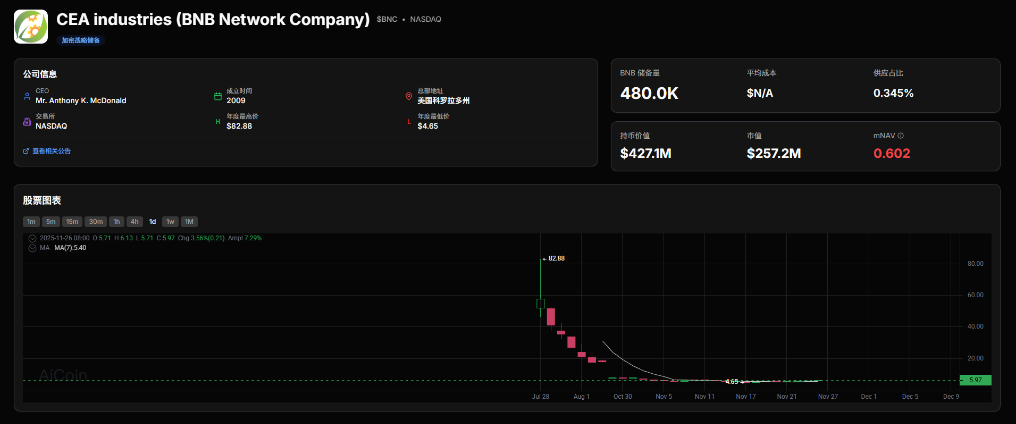Fed Rate Cut Expectations: A Double-Edged Sword for Crypto Markets
- Fed's dovish pivot, highlighted by Powell's Jackson Hole 2025 speech, triggered crypto rallies as markets priced in 89% odds of September rate cuts. - Bitcoin surged to $117,000 amid easing signals, but "buy the rumor, sell the news" risks persist due to historical patterns and overbought on-chain metrics. - Structural adoption trends (BlackRock ETFs, Ethereum upgrades) contrast with short-term volatility, urging long-term investors to balance optimism with hedging strategies. - Fed's data-dependent appr
The Federal Reserve's recent pivot toward rate cuts, underscored by Chair Jerome Powell's Jackson Hole 2025 address, has ignited a surge in crypto markets. Bitcoin and Ethereum have rallied on the back of dovish signals, with investors pricing in a 89% probability of a September cut. Yet, this euphoria masks a critical tension: the Fed's actions, while supportive of risk assets, may also trigger a “buy the rumor, sell the news” correction. For long-term investors, the challenge lies in balancing optimism with structural risk management in a landscape where macroeconomic signals and on-chain dynamics increasingly diverge.
The Fed's Dovish Pivot and Its Crypto Implications
Powell's Jackson Hole remarks emphasized a “curious balance” in the labor market, where slowing job creation and immigration-driven demographic shifts have left the U.S. economy vulnerable to sudden downturns. A 1.2% GDP growth rate and a 4.2% unemployment rate—historically low but structurally fragile—have pushed the Fed toward easing. This dovish stance has directly inflated crypto prices, with Bitcoin surging to $117,000 in late August 2025. The logic is clear: lower rates reduce the opportunity cost of holding non-yielding assets like Bitcoin and Ethereum, while easing financial conditions broadly.
However, the Fed's independence from political pressures—such as Trump's demands for aggressive cuts—adds nuance. The September rate cut, if enacted, will likely be a calibrated response to economic data, not a political maneuver. This distinction is critical: while the market has priced in the cut, the Fed's data-dependent approach means outcomes remain contingent on inflation trends and labor market updates.
The “Buy the Rumor, Sell the News” Pattern Revisited
Historical precedents from 2020 to 2025 reveal a recurring theme: crypto markets rally sharply in anticipation of Fed easing but often correct once the policy is implemented. In 2020, Bitcoin surged from $4,000 to $70,000 amid pandemic-era rate cuts, only to face sharp retracements as investors locked in profits. Similarly, the 2025 cycle saw Bitcoin briefly exceed $117,000 post-Jackson Hole, followed by a pullback as the market digested the Fed's signals.
On-chain metrics amplify these risks. Bitcoin's RSI hit 65 in August 2025, signaling overbought conditions, while its Market Value to Realized Value (MVRV) ratio reached 2.3×—a threshold historically linked to profit-taking. Ethereum's MVRV ratio, at +58.5%, suggests even greater vulnerability. Santiment's analysis further highlights a surge in social sentiment around “Fed rate cuts,” an 11-month peak that often precedes market tops.
Strategic Entry Points Amid Overbought Conditions
For long-term investors, the key lies in identifying strategic entry points amid this volatility. Three factors should guide decision-making:
On-Chain Divergence: The Volume Oscillator's divergence with Bitcoin's price in late June 2025 signaled cooling buying momentum. A pullback to the $92K–$96K support zone—where Bitcoin consolidated in Q2—could present a disciplined entry point.
Structural Adoption Trends: Institutional adoption of Bitcoin and Ethereum remains robust. BlackRock's spot ETF inflows and the Pectra upgrade's technical improvements for Ethereum underscore long-term value. Investors should prioritize assets with clear utility, such as Bitcoin's role as a macro hedge or Ethereum's DeFi infrastructure.
Hedging Against Corrections: Given the “buy the rumor, sell the news” risk, hedging with Treasury bonds or inverse crypto ETFs can mitigate downside exposure. Positioning for dovish outcomes while preparing for hawkish surprises is essential.
Navigating the Post-Jackson Hole Landscape
The Fed's September decision will test the resilience of crypto markets. A rate cut could initially reinforce bullish momentum, but overbought conditions and political uncertainties—such as Trump's calls for further easing—introduce volatility. Investors must remain vigilant to macroeconomic data, particularly inflation and labor market updates, which could trigger abrupt shifts.
For those with a long-term horizon, the current environment offers opportunities to accumulate undervalued assets at pullback points. However, structural risk management—through diversification, hedging, and disciplined position sizing—remains paramount. The crypto market's maturation, driven by institutional adoption and regulatory clarity, suggests that fundamentals will increasingly dictate outcomes. Yet, the interplay between Fed policy and speculative behavior ensures that volatility will persist.
In conclusion, the Fed's rate cut expectations are a double-edged sword: they fuel growth but also amplify the risk of corrections. By balancing optimism with a rigorous assessment of on-chain dynamics and macroeconomic signals, investors can navigate this complex landscape and position themselves for sustained success.
Disclaimer: The content of this article solely reflects the author's opinion and does not represent the platform in any capacity. This article is not intended to serve as a reference for making investment decisions.
You may also like
Ethereum Privacy’s HTTPS Moment: From Defensive Tool to Default Infrastructure
Summarizing the "holistic reconstruction of the privacy paradigm" from dozens of speeches and discussions at the Devconnect ARG 2025 "Ethereum Privacy Stack" event.

Shareholder Revolt: YZi Labs Forces BNC Boardroom Showdown

Halving Is No Longer the Main Theme: ETF Is Rewriting the Bitcoin Bull Market Cycle

The Crypto Market Amid Liquidity Drought: The Dual Test of ETFs and Leverage
